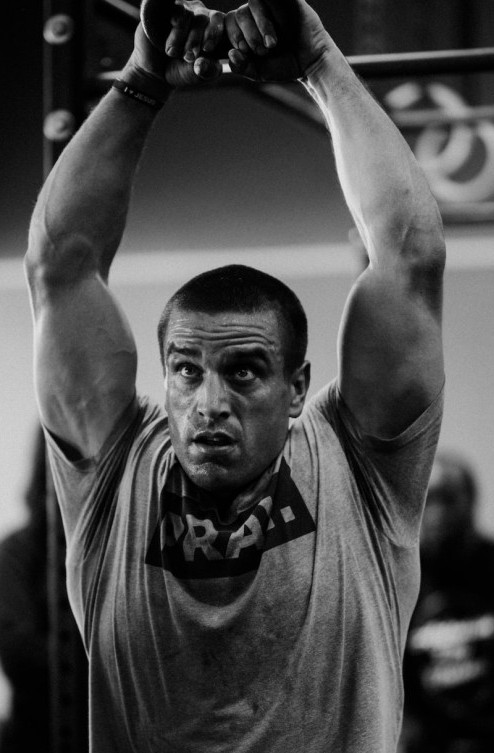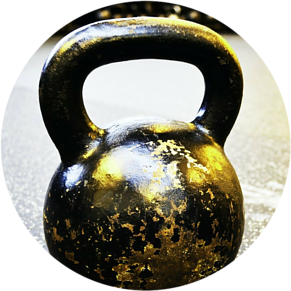
In our last post, we talked about how kettlebell training is an excellent method of muscle building (You can check out the post here if you haven’t read it yet). The thing is, I have a passion for understanding the science behind the training methodologies we see all around the fitness community. And since kettlebell training is still relatively “new to the scene” in terms of common acceptance, I thought it would be a good idea to continue our discussion on muscle building (hypertrophy), so we can see how much the kettlebell can really be used as a viable option to build bigger, stronger, more injury-resistant muscles and bodies. I’m sure by the end of this, you’ll be itching to try out some kettlebell centered workouts, so check out part 3 of our Kettlebell Muscle Building series (coming soon!) to get some great workout recommendations!
When it comes to muscle building, it is (at its fundamental form) essentially about causing small microtears in the muscle through volume and intensity, thus disrupting our body’s typical homeostatic state and sparking new adaptation in the form of bigger and stronger muscles. However, there are factors that occur at the hormonal level that are worth mentioning.
The Hormonal Response to Kettlebell Workouts
Beyond merely the mechanics of exercise, science also plays a role in the development of muscle. Kettlebell exercise has been proven to affect these hormones in ways that support muscular growth. Hormones are crucial in controlling how muscles develop.
Testosterone
Testosterone is a hormone that is primarily linked to the development of muscle. It is in charge of accelerating the process by which muscles mend and expand, known as muscle protein synthesis. Exercises using kettlebells, especially those based on the principles of high-intensity interval training (HIIT), can significantly raise testosterone levels. Kettlebell swings are one example of a short, strong effort burst that is known to increase testosterone production. This increase in hormones aids in enhancing the response of kettlebell training to muscular building.
Growth Hormone
Growth hormone (GH) is another important hormone involved in the development of muscles. It promotes the growth of new muscle fibers as well as the repair of damaged ones. Various studies have indicated that full-body movements and brief rest periods during high-intensity kettlebell workouts can cause a rise in growth hormone secretion (similar to the rise in testosterone levels). Kettlebell exercises are intense and metabolically taxing, which promotes GH release and promotes muscular hypertrophy.
EPOC (Excess Post-Exercise Oxygen Consumption)
The phenomenon of EPOC, also known as the “afterburn effect,” happens when your body continues to burn calories and use energy after an exercise. Kettlebell training is particularly effective at eliciting a significant EPOC response, which can further support additional muscle growth and fat loss.
High-Intensity Interval Training (HIIT): A lot of kettlebell workouts follow a HIIT format, which entails quick bursts of high intensity effort (such as heavy kettlebell swings) followed by short rest intervals (commonly around 15-30 seconds). With this HIIT strategy, the heart rate is raised and the amount of oxygen consumed during the workout increases. This causes the body’s metabolism to stay high after exercise in order to replenish energy reserves and repair muscle tissue. This extra bit of caloric expenditure can help support fat loss, while the intensity of HIIT training can help preserve and/or build more muscle.
Muscle Recovery and Repair
EPOC also plays a role in muscle recovery. After a challenging kettlebell workout, the body requires energy to repair and rebuild muscle fibers (muscle protein synthesis). This post-exercise energy expenditure contributes to muscle growth as it facilitates the repair and growth of muscle tissue.
As you can see, kettlebell training is certainly a viable resistance training option to consider when trying to build muscle. Kettlebell training addresses all the same mechanical and hormonal factors that come into play with muscle hypertrophy, at least as well as typical gym exercises too. Additionally, kettlebell training programs often have the advantage of the ballistic/explosive movements, not to mention their versatility, cost-effectiveness, and portability. So at this point, I’m sure you’re feeling like, “okay, okay, you’ve convinced me of the science. How do I get started?!”
How To Incorporate Kettlebells Into Your Training
Now that we’ve explored the science and real-world success stories behind kettlebell training for muscle growth, it’s essential to understand how to integrate this effective form of exercise into your fitness routine. Here are some key considerations:
As a Beginner
If you’re new to kettlebells, begin with lighter weights and focus on mastering fundamental movements like the kettlebell swing and goblet squat. Proper form is crucial to prevent injury and maximize results. Check out some excellent beginner exercises here (coming soon).
Progress and Variation
As you become more proficient, progressively increase the weight of your kettlebell and incorporate a variety of exercises. Variety challenges your muscles in different ways, leading to continued growth. Not to mention, the added variety will help your body build coordination in multiple planes of movement, helping you prevent injury, and keeping your workouts fresh and fun.
Mix it Up!
You don’t have to go completely in training with just kettlebells! For me, I started with just a few sets of swings at the end of each workout. As my understanding of kettlebell movements grew, so did my interest in kettlebell training, such that the majority of my training began to shift towards primarily utilizing kettlebells. So consider adding kettlebell workouts as a supplementary component to your existing strength training routine, just to see how you like them and to further build muscle with some added volume and new training stimulus. Who knows? There’s a good chance it’ll help you hit your next deadlift PR, like it did with me!
Get Enough Rest and Recovery
Kettlebell training can be intense, so ensure you allow adequate time for rest and recovery between sessions. A good place to start is adding some kettlebell training 2x per week, then progressing to 3x, and eventually every other day, or 2 days on and 1 day off.
Consistency, Consistency, Consistency
Like any fitness regimen, consistency is essential. Like I said earlier, aim for regular kettlebell workouts, ideally 2-3 times per week, to see steady progress in muscle development. Also, don’t expect to master the kettlebell in one workout! But that challenge is part of the fun! “Unlocking” new and more advanced kettlebell movements is such a rewarding feeling, and it only comes with practice and consistency. At the end of the day, consistency will be the biggest factor in your reach your goals of building more muscle.
Don’t Forget Nutrition!
Just as a side-note (and I’m aware I may be preaching to the choir), pay attention to your nutrition. Muscle growth doesn’t just come from exercise, but from supporting that exercise with proper rest (like, get enough sleep!) and nutrition. To support muscle growth, ensure you’re consuming a balanced diet rich in protein, carbohydrates, and healthy fats. I don’t want to bog down this post, but here’s another one that will give some key nutrition tips for your fitness goals!
The Kettlebell: An Amazing Muscle Builder

As I’m sure your convinced by now, the kettlebell is an amazing tool for muscle building! It provides enough of a challenge to elicit the mechanical and hormonal responses necessary to trigger muscle hypertrophy. If you’re ready to get started, but don’t know where to look, check out part 3 of our kettlebell muscle building series! (coming soon). We’ll provide you with some great workouts to get started! As always, if you have any questions, please feel welcome to reach out to me at mark@kettlebellsource.com or comment below!
Happy Kettlebelling,
Mark